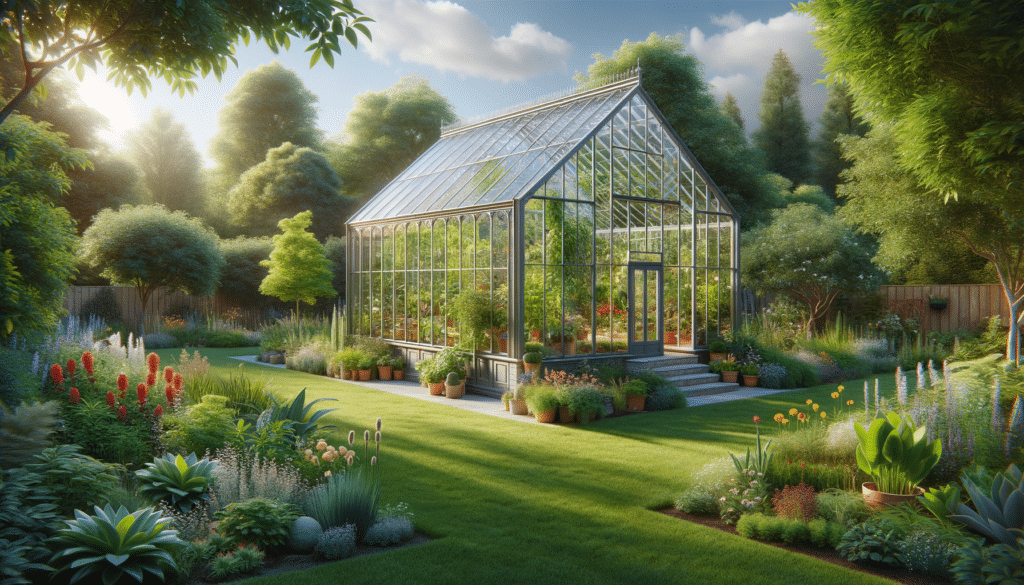Understanding Greenhouse Benefits
Greenhouses are more than just structures; they are vital tools for enhancing the gardening experience. They provide a controlled environment that allows for the cultivation of plants beyond their natural growing season. This extended growing period is one of the primary benefits, enabling gardeners to enjoy fresh produce and flowers even in the off-season. By regulating temperature, humidity, and light, greenhouses create optimal conditions for plant growth, leading to healthier and more robust plants.
Moreover, greenhouses protect plants from adverse weather conditions such as frost, heavy rain, and strong winds. This protection ensures that delicate seedlings and mature plants alike are shielded from potential damage, thus improving the survival rate and yield of crops. Additionally, greenhouses can help in pest management by creating a barrier against insects and other pests that might otherwise harm plants.
Greenhouses also offer significant benefits for hobbyists and commercial growers alike. For hobbyists, they provide a space to experiment with different plant species and growing techniques. For commercial growers, greenhouses can lead to increased productivity and profitability by allowing for year-round production and reducing crop losses due to weather and pests.
- Extended growing season: Cultivate plants beyond their natural timeframe.
- Weather protection: Shield plants from frost, rain, and wind.
- Pest management: Create a barrier against harmful insects.
- Increased productivity: Benefit both hobbyists and commercial growers.
Types of Greenhouses
Greenhouses come in various styles, each designed to meet specific needs and preferences. The most common types include lean-to, freestanding, and attached greenhouses. Lean-to greenhouses are built against an existing structure, such as a house or garage, offering convenience and easy access to utilities like water and electricity. This type is ideal for gardeners with limited space or those who prefer a greenhouse that integrates seamlessly with their home.
Freestanding greenhouses, on the other hand, are standalone structures that offer the flexibility of placement anywhere in the garden. They are available in a range of sizes and materials, allowing gardeners to choose a structure that best fits their space and budget. These greenhouses are perfect for those who want a dedicated area for gardening activities.
Attached greenhouses combine the benefits of both lean-to and freestanding types. They are connected to a building but extend outward, providing more space than a lean-to while still offering convenient access to utilities. This type is suitable for gardeners who wish to maximize their growing area without sacrificing proximity to their home.
- Lean-to greenhouses: Built against existing structures for easy access.
- Freestanding greenhouses: Standalone structures with flexible placement.
- Attached greenhouses: Combine space and convenience.
Choosing the Right Greenhouse for Your Needs
Selecting the right greenhouse involves considering several factors, including space, budget, and intended use. First, assess the available space in your garden to determine the size and type of greenhouse that will fit comfortably. Consider the layout of your garden and the amount of sunlight the location receives, as this will impact the greenhouse’s effectiveness.
Budget is another crucial factor. Greenhouses are available in a wide range of prices, from economical kits to custom-built structures. Determine how much you are willing to invest and explore options that provide the best value for your money. Consider not only the initial cost but also ongoing maintenance expenses, such as heating and ventilation.
Finally, think about your intended use for the greenhouse. Are you a hobbyist looking to grow a variety of plants, or are you a commercial grower aiming for high yields? Your goals will influence the type of greenhouse you choose. For example, a hobbyist might prefer a smaller, more affordable structure, while a commercial grower may require a larger, more durable greenhouse.
- Space assessment: Evaluate garden layout and sunlight availability.
- Budget considerations: Balance initial cost and maintenance expenses.
- Intended use: Align greenhouse choice with gardening goals.


